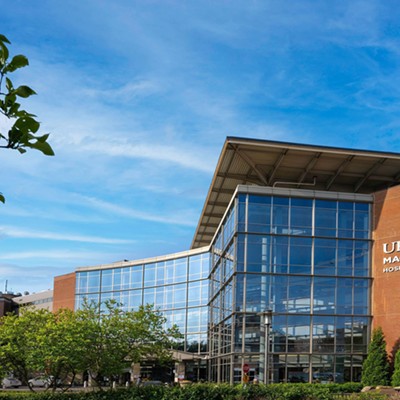Erika Osborne's exhibit Imprinting Place expresses a consistent attitude toward a dominant theme — namely, that place is the nexus of our interface with nature. In other words, nature is neither an abstraction nor a symbol, but rather a reality of animate and inanimate things, with their interconnectedness and often-fragile interdependency.
Osborne is emphasizing "place" as those often-dramatic locales where we witness and perhaps most appreciate nature, including its enormous variety of landforms and species. A West Virginia University art professor with an environmental focus, Osborne has employed a variety of approaches to address what is, after all, a vast concept. Created over a period of 10 years, drawings, topographical maps, staged photographs and ink-jet prints in various configurations add up to a small-scale survey.
In "Juniper — Muley Point, UT, BLM" (2012), a graphite drawing of a tree on translucent vellum lets us see the topographical map underneath, showing us where this unique specimen exists, conveying the fact that place is always specific and that all plants are site-specific. As for actual imprinting, which the exhibit's title alludes to, photographic prints such as "Recording Blue Notch" (2004), feature individuals with exposed backs displaying line drawings based on and connecting to the surrounding landscape.
Taken on their own, these staged photographs might seem to simply say that we are affected by the places where we find ourselves. But the context created here by drawings and maps, and by photographs of people superimposed on maps, suggests a more complex interplay: that "place" is not only where we experience nature, but where we are affected by it and might be moved to consider our effect on it.
It's clear enough what Osborne feels about nature and place, and our place in nature. Her palpable concern for the planet and its multitude of residents appears to be knowledge-based — one suspects she would even admit that global warming is real.
She has taken the trouble to communicate her concern, as in "Manti La Sal Spruce Beetle Detection I and II" (2005), which connects people, landscape, trees and destructive insect species. Yet, given the didactic element implicit in this exhibit, a bit more info — as to why bark beetles are killing so many trees in the West, for example — could move beyond inspiration into persuasion.














